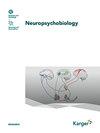精神分裂症患者精神障碍筛查TULIA(AST)的验证
IF 3.1
4区 心理学
Q3 NEUROSCIENCES
引用次数: 1
摘要
社会互动和社区功能缺陷,包括手势的使用、表现和感知受损,是精神分裂症的主要特征。上肢失用症(TULIA)是一种公认的评估手势缺陷的工具。然而,鉴于其基于视频分析的应用耗时,研究人员提出了TULIA (AST)床边失用屏幕。本研究旨在测试AST在27例诊断为精神分裂症、分裂型精神障碍、急性和短暂性精神障碍或分裂情感障碍的患者中检测床边手势异常的有效性和可靠性。方法:患者完成48项的TULIA和12项的AST,由两名不同的评分者对AST进行评估:一名在床边(在线),另一名基于视频记录。结果:AST总分具有较高的平行信度、中等的单项信度和较好的构念效度。结论:AST的心理测量特性表明它可以很好地用于精神分裂症手势缺陷的临床评估。但是,当需要详细信息时,建议从视频中评估AST或进行完整的TULIA。研究结果要求改进TULIA项目的选择,用于精神病- ast床边试验,以增加特异性。本文章由计算机程序翻译,如有差异,请以英文原文为准。
Validation of the Apraxia Screen TULIA (AST) in Schizophrenia
Introduction: Deficits in social interaction and community functioning, including impaired use, performance, and perception of hand gestures, are key features in schizophrenia. A well-established tool to assess gesture deficits is the test of upper limb apraxia (TULIA). However, given its time-consuming application based on video analyses, research has proposed the bedside apraxia screen of TULIA (AST). This study aims to test the validity and reliability of the AST to detect gesture abnormalities at bedside in a sample of 27 patients diagnosed with schizophrenia, schizotypal disorder, acute and transient psychotic disorders, or schizoaffective disorder. Methods: Patients completed the 48-item TULIA and the 12-item AST. Two different raters assessed the AST: one at bedside (online) and the other based on the video recordings. Results: The total AST scores demonstrated a high parallel reliability, moderate inter-rater reliability on a single-item level, and good construct validities. Conclusions: The psychometric properties of the AST suggest it can well be used for the clinical assessment of gesture deficits in schizophrenia. However, when detailed information is required, the AST rated from video or conducting the full TULIA is recommended. The findings call for refining the selection of the TULIA items for a psychosis-AST bedside test to increase specificity.
求助全文
通过发布文献求助,成功后即可免费获取论文全文。
去求助
来源期刊

Neuropsychobiology
医学-精神病学
CiteScore
7.20
自引率
0.00%
发文量
26
审稿时长
6 months
期刊介绍:
The biological approach to mental disorders continues to yield innovative findings of clinical importance, particularly if methodologies are combined. This journal collects high quality empirical studies from various experimental and clinical approaches in the fields of Biological Psychiatry, Biological Psychology and Neuropsychology. It features original, clinical and basic research in the fields of neurophysiology and functional imaging, neuropharmacology and neurochemistry, neuroendocrinology and neuroimmunology, genetics and their relationships with normal psychology and psychopathology. In addition, the reader will find studies on animal models of mental disorders and therapeutic interventions, and pharmacoelectroencephalographic studies. Regular reviews report new methodologic approaches, and selected case reports provide hints for future research. ''Neuropsychobiology'' is a complete record of strategies and methodologies employed to study the biological basis of mental functions including their interactions with psychological and social factors.
 求助内容:
求助内容: 应助结果提醒方式:
应助结果提醒方式:


